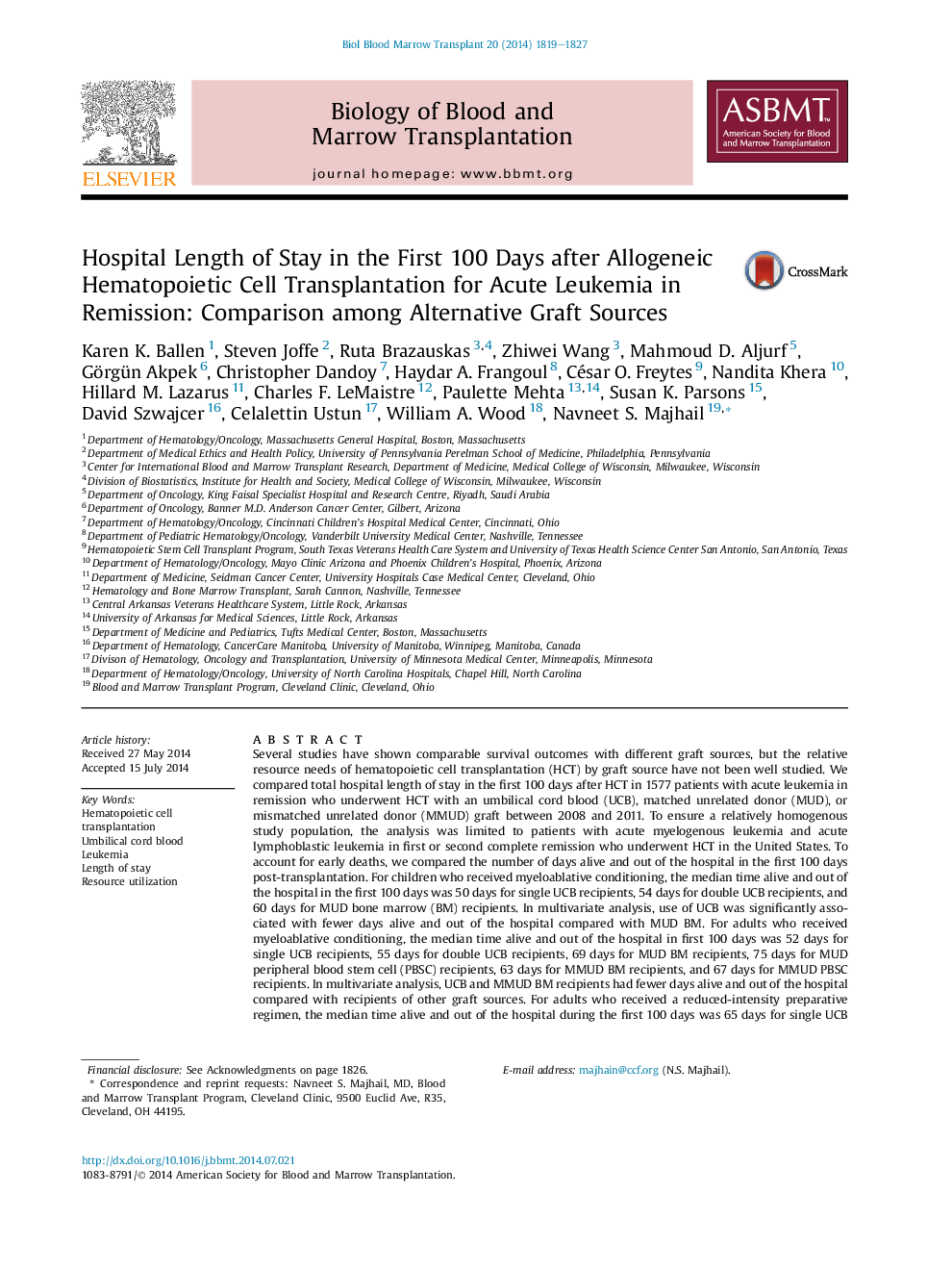| کد مقاله | کد نشریه | سال انتشار | مقاله انگلیسی | نسخه تمام متن |
|---|---|---|---|---|
| 2101989 | 1546274 | 2014 | 9 صفحه PDF | دانلود رایگان |

Several studies have shown comparable survival outcomes with different graft sources, but the relative resource needs of hematopoietic cell transplantation (HCT) by graft source have not been well studied. We compared total hospital length of stay in the first 100 days after HCT in 1577 patients with acute leukemia in remission who underwent HCT with an umbilical cord blood (UCB), matched unrelated donor (MUD), or mismatched unrelated donor (MMUD) graft between 2008 and 2011. To ensure a relatively homogenous study population, the analysis was limited to patients with acute myelogenous leukemia and acute lymphoblastic leukemia in first or second complete remission who underwent HCT in the United States. To account for early deaths, we compared the number of days alive and out of the hospital in the first 100 days post-transplantation. For children who received myeloablative conditioning, the median time alive and out of the hospital in the first 100 days was 50 days for single UCB recipients, 54 days for double UCB recipients, and 60 days for MUD bone marrow (BM) recipients. In multivariate analysis, use of UCB was significantly associated with fewer days alive and out of the hospital compared with MUD BM. For adults who received myeloablative conditioning, the median time alive and out of the hospital in first 100 days was 52 days for single UCB recipients, 55 days for double UCB recipients, 69 days for MUD BM recipients, 75 days for MUD peripheral blood stem cell (PBSC) recipients, 63 days for MMUD BM recipients, and 67 days for MMUD PBSC recipients. In multivariate analysis, UCB and MMUD BM recipients had fewer days alive and out of the hospital compared with recipients of other graft sources. For adults who received a reduced-intensity preparative regimen, the median time alive and out of the hospital during the first 100 days was 65 days for single UCB recipients, 63 days for double UCB recipients, 79 days for MUD PBSC recipients, and 79 days for MMUD PBSC recipients. Similar to the other 2 groups, receipt of UCB was associated with a fewer days alive and out of the hospital. In conclusion, length of stay in the first 100 days post-transplantation varies by graft source and is longer for UCB HCT recipients. These data provide insight into the resource needs of patients who undergo HCT with these various graft sources.
Journal: - Volume 20, Issue 11, November 2014, Pages 1819–1827